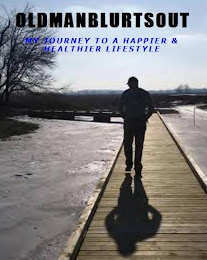
Today on FOCUS Friday I would like to welcome Michael Najarian from Personal Growth Productions as my guest writer. I have enjoyed the writings on his blog and website for awhile now and always find his articles inspirational and interesting. Please take the time to visit him. Also, please let me take this opportunity to introduce his wife, Susan. She is an incredible artist and posts her glorious artwork at Blackbirds and Bumblebees. I really enjoyed Michael's article below reprinted with his permission from the Personal Growth section of his website. I am sure you will find it inspirational as well.
Meditation & Prayer
Close your eyes. Take a couple of deep breaths. Listen. If your experience is anything like mine, you are now hearing a lot of noise. Like the chatter of teletype, we process one thought after another in a continuous flow. With this much incessant activity, it is unlikely we will ever hear something as soft-spoken as intuition while our attention is diverted by the louder voices of what I don’t want and have yet to achieve. As the multitudes shout, I am a worthless sinner, it is hard to hear the more melodic sounds of, I am a magnificent expression of God’s love.
Listen to your thoughts and notice how they are all, apparently, connected. What’s next? Why did that happen? Where am I going? Where have I been? What does this all mean? During an interview with Deepak Chopra many years ago, he reminded me that although this flow of thought appears constant, in between each thought no matter how “infinitesimally small,” there resides a space, a “gap,” to use his precise description. I have found, within this gap, the silence, the peace, the rest we need to nourish and replenish the body and mind. For some, entry into this space is also an opportunity to glimpse and touch the unseen self…the soul.
Chopra continued to explain the practice of meditation allows us to gently slip into this gap, if even for a passing moment. With continued practice, we are able to expand the space between thoughts, increasing the silence and giving additional dimension to the gap. As the gap grows, we are better able to sink into this space, soothed by the peace as we connect with our inner being.
Through the ages, we have been given many maps to the gap; directions for returning to our source. While the precise methods may vary, every path shares the common element of reducing thought activity by stemming the tide of constant noise. Give focus to a single thought, it is suggested by using a mantra, our breath, the flame of a candle or prayer. By contracting our divided attention, we quiet the distractions and can more easily slip into the elusive space between our thoughts and peacefully rest within the gap.
Residing in the gap is tricky as this is a place without thought. After years of noise, finding yourself in this peaceful state is cause for celebration, “Wow…this feels great!” And, with this thought you have already made a hasty retreat from the bliss you were just about to experience. Darn! As the Buddhists say, Before enlightenment, chop wood, carry water. After enlightenment, chop wood, carry water. Learning to move with grace asks for our patience, understanding and forgiveness and all of these qualities must be turned inward before we can make use of them with others. In the silence we grow as we meet our highest self.
As we become better acquainted with who we are, light begins to illuminate our path. The answers we seek are all within, the path obscured by the noise, the distractions we will now learn to set aside. You cannot ignore the snow storm for as soon as you say to yourself, don’t think about the storm, you have just given the snow your full attention. The most you can do is gently set aside distracting thoughts as any struggle gives them counterproductive power. What you resist persists.
There is a multitude of research on the benefits of quieting the mind and I encourage you to seek out this information if it is unfamiliar or as a reminder or update. Most appropriate for this discussion, I ask you to reflect on vast amount and variety of historical references to the value and practice of seeking the silence I describe. In the west, we have Biblical accounts from Old Testament to New Testament citing the value of prayer. We have contemporary demonstrations of success with hypnosis. Yogananda and other western teachers of eastern thought have all carried messages of meditation rooted in Buddhism and other old world religious and spiritual practices. The Mayans, the Incas, the American Indian and groups representing diverse civilizations and geographic locations through time all present ritual that honors silence. Further, this silence is a vehicle to self-realization that is commonly achieved by a reverent practice of paring down diverse thought to single thought and then to no thought or a silence referenced to as bliss.
Meditation & Prayer
Close your eyes. Take a couple of deep breaths. Listen. If your experience is anything like mine, you are now hearing a lot of noise. Like the chatter of teletype, we process one thought after another in a continuous flow. With this much incessant activity, it is unlikely we will ever hear something as soft-spoken as intuition while our attention is diverted by the louder voices of what I don’t want and have yet to achieve. As the multitudes shout, I am a worthless sinner, it is hard to hear the more melodic sounds of, I am a magnificent expression of God’s love.
Listen to your thoughts and notice how they are all, apparently, connected. What’s next? Why did that happen? Where am I going? Where have I been? What does this all mean? During an interview with Deepak Chopra many years ago, he reminded me that although this flow of thought appears constant, in between each thought no matter how “infinitesimally small,” there resides a space, a “gap,” to use his precise description. I have found, within this gap, the silence, the peace, the rest we need to nourish and replenish the body and mind. For some, entry into this space is also an opportunity to glimpse and touch the unseen self…the soul.
Chopra continued to explain the practice of meditation allows us to gently slip into this gap, if even for a passing moment. With continued practice, we are able to expand the space between thoughts, increasing the silence and giving additional dimension to the gap. As the gap grows, we are better able to sink into this space, soothed by the peace as we connect with our inner being.
Through the ages, we have been given many maps to the gap; directions for returning to our source. While the precise methods may vary, every path shares the common element of reducing thought activity by stemming the tide of constant noise. Give focus to a single thought, it is suggested by using a mantra, our breath, the flame of a candle or prayer. By contracting our divided attention, we quiet the distractions and can more easily slip into the elusive space between our thoughts and peacefully rest within the gap.
Residing in the gap is tricky as this is a place without thought. After years of noise, finding yourself in this peaceful state is cause for celebration, “Wow…this feels great!” And, with this thought you have already made a hasty retreat from the bliss you were just about to experience. Darn! As the Buddhists say, Before enlightenment, chop wood, carry water. After enlightenment, chop wood, carry water. Learning to move with grace asks for our patience, understanding and forgiveness and all of these qualities must be turned inward before we can make use of them with others. In the silence we grow as we meet our highest self.
As we become better acquainted with who we are, light begins to illuminate our path. The answers we seek are all within, the path obscured by the noise, the distractions we will now learn to set aside. You cannot ignore the snow storm for as soon as you say to yourself, don’t think about the storm, you have just given the snow your full attention. The most you can do is gently set aside distracting thoughts as any struggle gives them counterproductive power. What you resist persists.
There is a multitude of research on the benefits of quieting the mind and I encourage you to seek out this information if it is unfamiliar or as a reminder or update. Most appropriate for this discussion, I ask you to reflect on vast amount and variety of historical references to the value and practice of seeking the silence I describe. In the west, we have Biblical accounts from Old Testament to New Testament citing the value of prayer. We have contemporary demonstrations of success with hypnosis. Yogananda and other western teachers of eastern thought have all carried messages of meditation rooted in Buddhism and other old world religious and spiritual practices. The Mayans, the Incas, the American Indian and groups representing diverse civilizations and geographic locations through time all present ritual that honors silence. Further, this silence is a vehicle to self-realization that is commonly achieved by a reverent practice of paring down diverse thought to single thought and then to no thought or a silence referenced to as bliss.



.jpg)



























No comments:
Post a Comment
Thank you for taking the time to leave your comments. I really do appreciate them and I always try visit your blog in return though sometimes it may take me a few days with my busy schedule. Thanks for your understanding.
Sing to the LORD, all the earth;
Proclaim good tidings of His salvation from day to day.
1 Chronicles 16:23